An Exclusive Moment with… Knox Bronson
Recently one of our contributors Andrew Proudlove interviewed Knox Bronson, a very well known figure in the iPhone community (NSFW). Perhaps best known most of all for his site Pixels, which displays and promotes iPhonic Art in the form of a heavily curated Web site, where each image on the site has been hand picked by Knox himself.
Read this great interview below and prepare to be inspired…
Knox Bronson

© Knox Bronson
KB – Knox Bronson
AP – Andrew Proudlove
Knox was instrumental in helping to develop the iPhone as a serious photography and art platform at the beginning of the iPhoneography movement, being the first person to take the up until then digital works and print and mount them in a gallery setting, introducing them to both the general public and art lovers alike.
AP – Hi Knox, thanks for agreeing to do this interview with us, I appreciate you taking the time especially as I know that you have a lot on your plate right now. I’ve barely scratched the surface with the introduction above, so I’d appreciate it, if you could tell us in your own words, who is Knox Bronson?
KB – If you are asking what I do, my day-job is freelance web and print design. P1xels also consumes a fair amount of time, both the running of the site, curating, dealing with artists, moving things forward.
What I am is slightly different: a child of the sixties, a survivor of the seventies, twenty-two years sober and off drugs, a father, a grandfather, a college dropout, a writer, a self-taught artist, composer, songwriter, a kind and generous person and very loyal friend according to some, a lunatic according to many.
As far as iPhonic art goes, I guess I was the midwife to the movement—taking it from the virtual to the real world—with the very first juried gallery show in January of 2010.
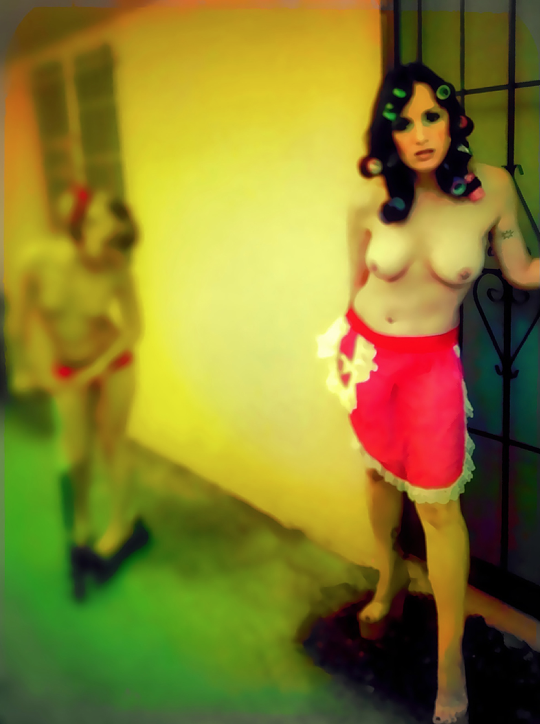
© Knox Bronson – ‘Metropolitan Home’
AP – I know from your Web site knoxbronson.com that you have a keen interest in music and that it might be fair to say, music was your first love. Is this still the case or has your journey into the art world superseded it or do you find that the two compliment or detract from each other?
KB – This is a difficult question to answer. Music was and is my first and most enduring love, but art has always followed close behind. However, it was not until I had an iPhone and started apping pictures that I ever thought I could be an actual visual artist. I can’t really draw or paint (even though I make my living as a designer) and, in my generation, every jerk who saw the movie “Blow Up” (Highly recommended to all) in the sixties went and bought a Nikon and became a “photographer” and I never wanted to be like any of them. I guess the rest of the jerks picked up a guitar: that would be me.
The first two years of P1xels were so demanding I didn’t have time to make any music and I began to suffer as a result. By early this year, I made a conscious decision to work on music if I had a little spare time, rather than grab my iPhone and work on a picture. It has been wonderful for my serenity and sanity. Which is why you see so few pictures of mine on the site. And they are usually cat pictures these days.
And at this point, I would say my return to music and its restorative powers has allowed me to really enjoy doing P1xels again and to keep it all in perspective.
I was at a friend’s concert a couple months back at the Freight & Salvage in downtown Berkeley. I sat there and watched her sing her beautiful songs, playing piano, accompanied by a drummer and bass player, and the whole time I was thinking,”If you had been promoting yourself instead of other artists and iPhonic art for the last two and a half years, you would be up there playing.” So … I remain conflicted at times …
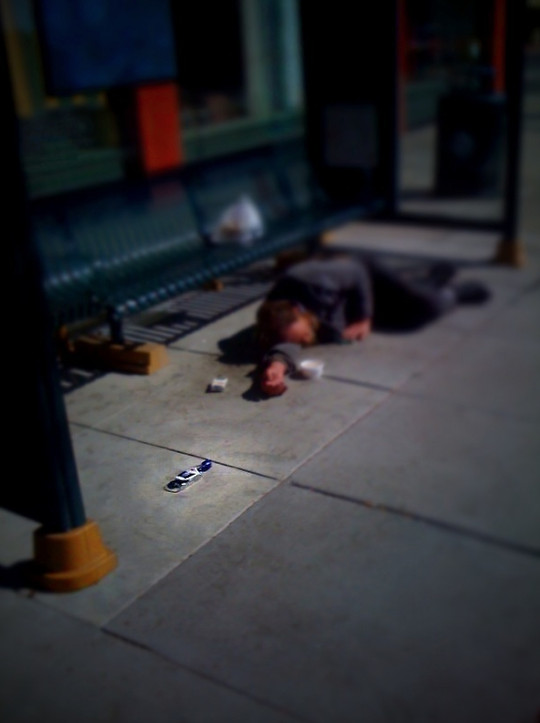
© Knox Bronson – ‘The Bottle’
AP – What was the initial idea that caused you to start Pixels? What made you think it was viable?
KB – I wanted to help my artist friend Maia Panos in her recovery from the death of her husband a year and a half earlier. I had showed her a couple of apps—Best Camera & Toy Camera— and she suddenly (and obsessively) was making beautiful images completely different from mine. Her work confirmed my hunch that we were dealing with a new medium.
I approached the Giorgi Gallery in Berkeley about doing a show of iPhone photography. Rae Douglass, the owner, said yes and I am always grateful for that and it all took off from there.
As the first eight hundred images came in for the show, something totally unexpected happened: I fell in love with the art and a number of the artists.
When the show opened and people were coming to the gallery and I saw the reactions to the work for the first time, it erased any doubt as to the validity of the art form that I ever might have had. Show after show and the universal reaction to the work by the public ever since have been continuing affirmations.
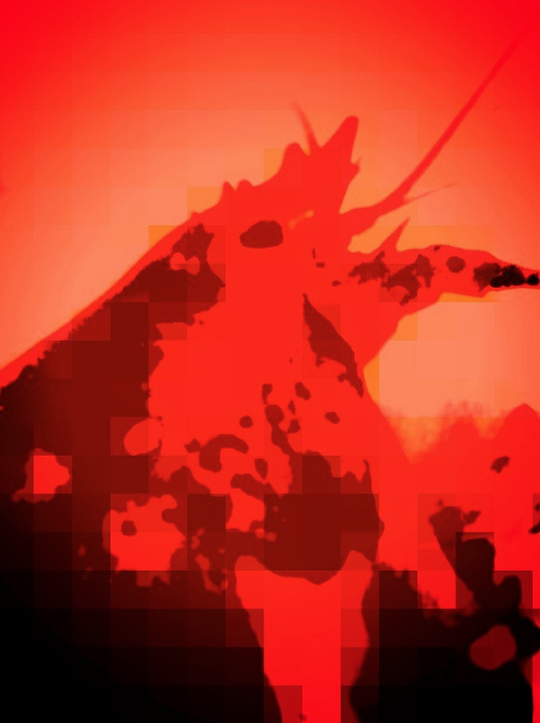
© Knox Bronson – ‘Lobster’
AP – Today iPhoneography and iPhonic Art is much more widely accepted, thanks in part to efforts from you and other people in the community. I’m sure though at the beginning things were much different. How have things changed since then?
KB – Well, people don’t laugh in my face anymore when I tell them what we are doing. I still get blown off by people in the art world, but not as much.
People hear “iPhone art” and think Instagram instead of Hipstamatic. They ask me why I didn’t think of Instagram. I have no answer for that.
iPhonic art is still an underground art movement, make no mistake.
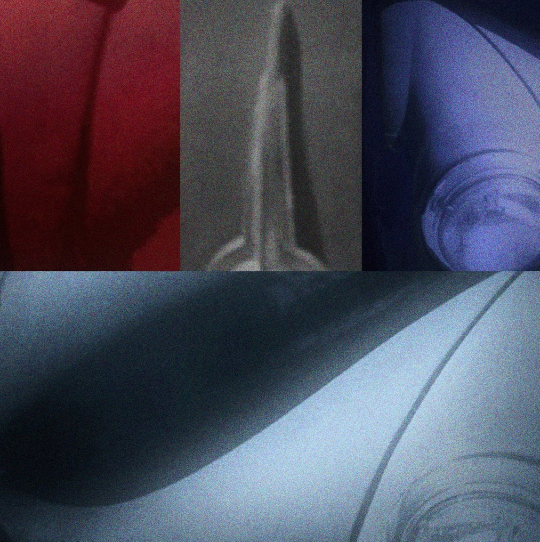
© Knox Bronson – ‘Autoerotica’
AP – Did you encounter a lot of resistance when you first launched Pixels?
KB – Mahatma Ghandi said, “First they ignore you, then they ridicule you, then they fight you, then you win.”
When I started P1xels and put out the first call for submissions for the first show in late 2009, the movement, such as it was, was contained mostly on Flickr and a handful of blogs and was dominated by a cotérie of “street” photographers, many of whom never submitted anything to P1xels, and still haven’t. I think they just viewed me as a johnny-come-lately and hoped P1xels would just go away.
I look back now, three years later, and see that my announcement of a gallery show and call for submissions was a major demarcation point in the evolution of the medium.
Unwittingly, I opened the door to a number of artists around the world who were not doing street photography, but rather were pursuing much more personal, artistic visions. These were the artists to whom I was immediately drawn: the ones who were defining a new artistic medium, not merely trying to replicate “real” photography with iPhone shtick.
Not too much later, without realizing it, I then set off the first huge battle in the evolution of the medium by not allowing images that were edited off-device. In other words, we were defining the medium itself and there were those who had a vested interest in allowing desktop or laptop editing.
I persevered and I won, but it was brutal. I say I won because I took the brunt of the hits, but it was the artists like Maia who would labor on an image for days or a week on the tiny iPhone screen with the buggy apps to bring forth the magic from an image who won.
I had too much respect for them to allow the old guard to turn the medium into a subset of photography, like that even mattered, and its evil hand-maiden, photoshop.
By the time we did our second show in May of 2010, I had seen firsthand the reaction people had (and still have) when they realize the images are made solely on an iPhone. They literally lit up as the comprehension dawned on them that there was no desktop/laptop photoshop work happening here.
So, yes, some resistance … I wish I could say I wish I handled it all differently at times. But it happened so fast, much of the time I didn’t know what was going on. In my mind, I was merely defending, somewhat forcefully, aesthetic principles I knew to be very important and, of course, my artists.

© Knox Bronson – ‘bebegun’
AP – What made you make the decision to curate Pixels? Why not simply post the images and allow people themselves to decide whether to “like” an image or not?
KB – After the first show at the Giorgi closed at the end of January, 2010, people kept sending in pictures, much to my amazement. As far as curation went, it seemed to me that there was, as I have mentioned, a number of dedicated artists who were really doing something new in this new medium.
I remember telling Maia that I was going to begin curating and I was scared what would happen. I really thought it possible that people would get mad and stop submitting. But the opposite happened: more pictures started to come in and they were getting better, rapidly. It was exciting. Throughout the history of the site, this pattern has repeated every time I have tightened curation.
To answer your question directly, I started curating solely to keep it fun and interesting for me.
If I allowed every image that came in to go up, then P1xels would just be Flickr or IPA or whatever and the comment-chasers would be curating the site. I have had a number of well-known divas stop submitting (and sometimes pull all their pictures off the site) because I didn’t post all their pictures. I cannot tell you how many times I’ve been told “I got thirty comments on Flickr on that image” and I would respond, “That is a mark down, not a mark up.” I have looked at probably fifty thousand images since the beginning, publishing less than a third of them altogether. These days, I publish maybe twenty percent of what comes in and the overall caliber of ALL the work. published or not, is incredible.
In reality, the artists set the bar at P1xels: I just uphold it. It’s a selfless task and luckily I respect my artists enough to do so without worrying about ruffled feathers, theirs or anybody else’s. They know that, and trust me, for reasons unbeknownst to me, to look out for everybody.
I’ve heard that people complain elsewhere that I write and tell them to change a picture if they want me to publish it. Well, at least I cared enough to write, I say. I could have just not published it. No other site does that. I have long hoped to see a real curated alternative to P1xels emerge, but it has yet to happen.
P1xels, everyone knows, has been the single most important incubator for the explosive growth of the medium. You go anywhere else and you have to wade through a hundred pictures to get to one good one. The big shows of earlier this year, not done by P1xels? Half of the images were daily pics on my site or in earlier shows of mine or most of the artists were ones I discovered and first featured.
So I don’t just curate P1xels, I curate for the whole movement. And no one sends me money or thanks for it like they should!
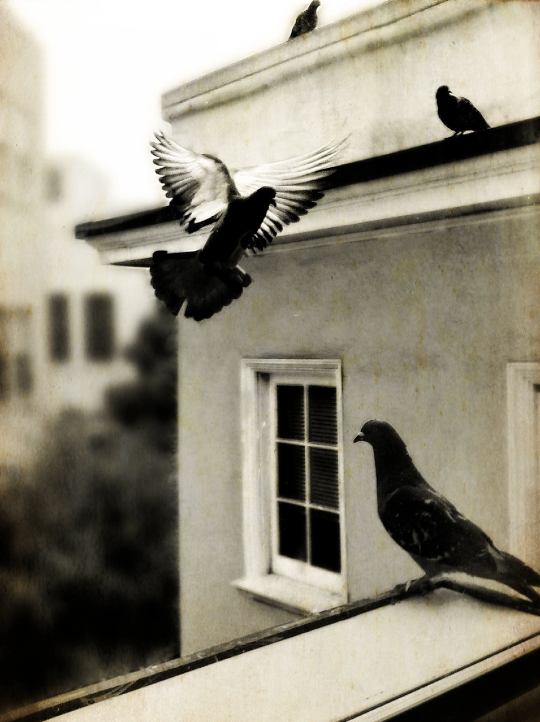
© Knox Bronson – ‘Mondain des Arnaqueurs’
AP – Has the curating process gotten easier over time or do you still find yourself debating over whether to post an image or not?
KB – It’s easier. If I don’t go “Wow,” I bounce it. It’s instinctive. I have never regretted not publishing a picture. That doesn’t mean I don’t wish I could have published it.
I still make mistakes, usually on the side of publishing pictures not quite up to par. I also publish dog pictures that I don’t like because I feel I must balance out the cat pictures for the dog lovers out there.
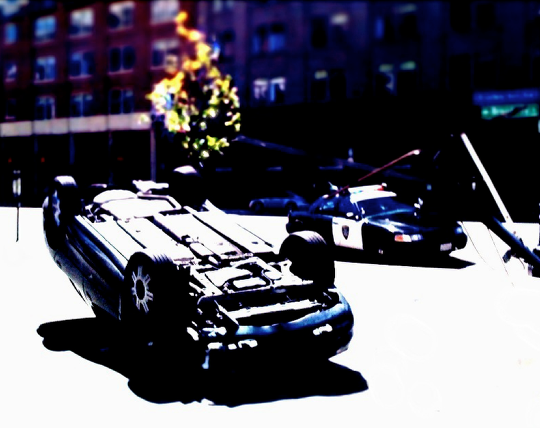
© Knox Bronson – ‘On Broadway’
AP – Some artists get discouraged when they submit numerous images to Pixels, only to not see any of them displayed on the site or have a response from you. Is there anything that you would like to say to help them out or understand your curation process?
KB – I get no satisfaction in not publishing pictures. If I don’t publish pictures, I don’t have a site, plain and simple. And I love new talent!
When a new person submits a bunch of images to the site, I always hope there is at least one publishable picture. I often write to new people and encourage them to keep submitting if they didn’t make the cut the first time. Some do, some don’t.
I have written a lot about curation on the site, things I like, things I don’t like. Click on “Curation” at the top of the page.
There are links within that article to other articles I’ve written about what I perceive the work of the the iPhonic artist to be. Recommended reading.
As far as people I have not responded to, I am sorry, I try! I have email addresses all over the site. People are welcome to write me. My phone number is prominently displayed. Feel free to call.
As soon as I get Indiegogo fulfillment finished, and the new site in process, and get the curation for THE THIRD WAVE gallery shows underway, I am planning on offering consultation services to artists through my fine art site, P1xels.com. This is very commonplace in the art and photography world and I think we are ready for it here in the land of iPhonic art. Lord knows I’ve been doing it long enough for free.
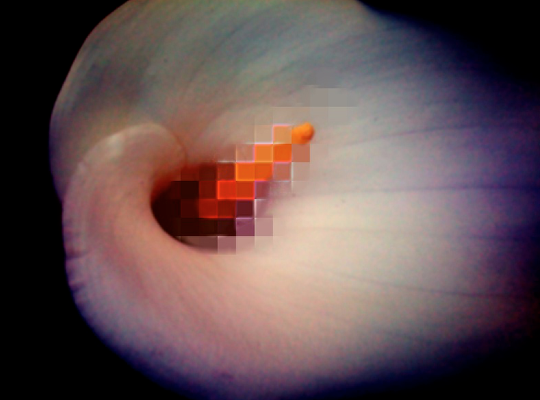
© Knox Bronson – ‘Avalon’
AP – I’ve seen you mention a couple of times in conversations that we are now entering what you refer to as the third wave in the movement, would you mind elaborating more on what you mean by that and when/what were the first and second waves?
KB – Well, the first wave was the Flickr groups, mostly the street artists who dominated the scene. After P1xels launched and featured a ton of new talent from all over the world, we entered an era of cross-fertilization, combined with the rapid development of tons of new apps. I’d say that phase lasted a year and a half or so – explosive growth and experimentation and the emergence of a number of very talented people.
And this year I’ve an amazing new crop of artists arise. The medium has matured along with the artists: there is a new confidence and determination and depth across the board.
There are wonderful, timeless works, iconic images, going all the way back to the beginning.
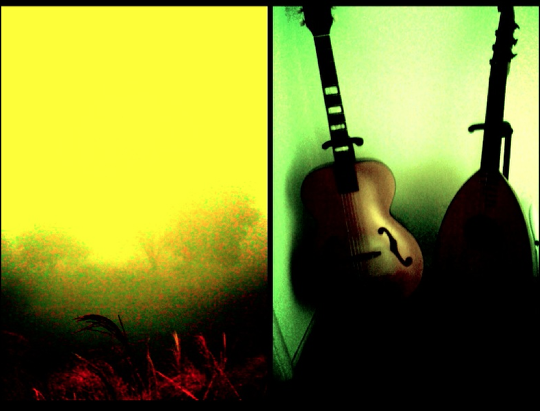
© Knox Bronson – ‘Golden Ratio’
AP – Based on your experience, what direction do you think iPhoneography will go? Do you see it becoming accepted as a photographic and fine art medium?
KB – That’s like asking what direction painting will go. I have already witnessed iPhonic art being accepted as a fine art medium. It’s only a matter of when, not if, the art form will find widespread acceptance in the “real” art world. We just haven’t entered the modern art narrative yet. It will happen. It is happening.
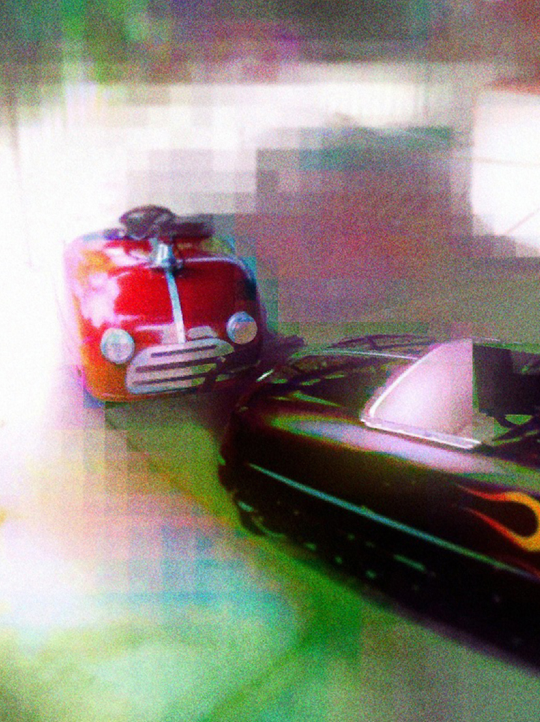
© Knox Bronson – ‘Knox_Car-Toon800Wide’
AP – What are the next steps now for Knox Bronson and Pixels? In which direction do you see yourself and the Pixels Web site going in the future?
KB – Well, I still have a few shots in the works. Can’t talk about them: I’ve learned that lesson the hard way.
I will be doing the Third Annual P1xels’ Global Expo very shortly, announcing a call for submissions, big plans for that.
I feel like I did what I was supposed to do for the medium over the past three years: make sure the hucksters and the wa***** didn’t degrade it by allowing off-device editing.
I have always insisted that people take themselves seriously as artists.
I have demanded respect on the institutional and corporate fronts for the artists and their work.
Some of the battles are still being fought, but I think I’ve laid the groundwork solidly enough so it wouldn’t go too far awry if I turned P1xels over to someone else and picked up my guitar again full time.
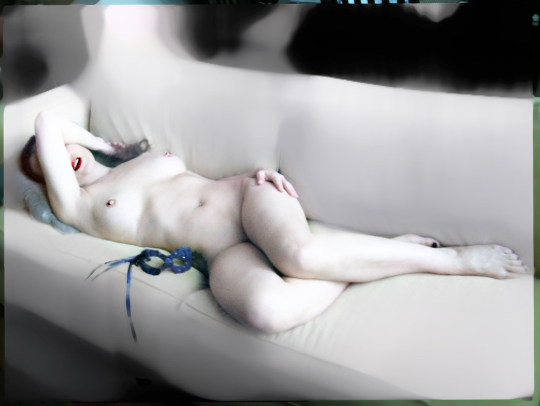
© Knox Bronson – ‘Unmasked’
AP – Once again thanks for taking the time to chat with us Knox. In closing, is there anything that you’d like to say or bring to peoples attention?
KB – I would say, in general, the biggest three mistakes artists make are 1) trying too hard, not trusting themselves and the picture, usually manifested in over-apping an image. I know I say “App that bitch ‘til it sings,” but the corollary is “App as needed;” 2) wasting their time on bad pictures. I’ve gotten hundreds of beautifully apped pictures of people shot from behind, for example, as well as all sorts of other boring pictures apped to perfection. The problem is, they are still boring. It actually hurts sometimes when I see this and I think, “Couldn’t you have gotten at least one face in there?” Don’t waste your time on boring pictures: you cannot app a bad picture into a good one most of the time, but everybody goes through that phase believing that at some point, including me; 3) Take your time. It is not a race! No one can make a great picture every day. Ansel Adams said that one great picture a month was a “really good crop.” Always be shooting. Pick the right image and bring forth its ephemeral beauty, not in haste, but in contemplation. We are doing visual magical realism. Be aware of every pixel!
Lastly, thanks, Andrew for asking me to be interviewed here.
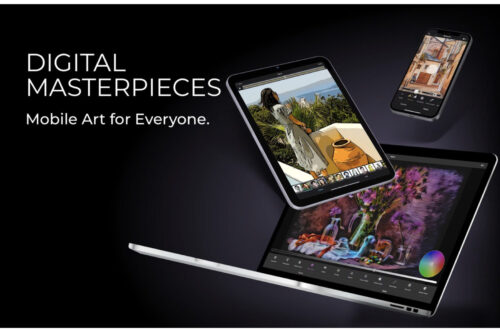
8 Comments
Nelson
Good read but it would be a really good idea to warn your readers when there is not safe for work content in your articles.
Joanne Carter
I’m sorry about that, I will do that in future.
Nelson
no prob just didnt want anyone else getting all crazy on you 🙂 thanks for what you do here.
Delta
An excellent interview – Now I understand more fully, the passion and inception of P1xels Thanks Andrew and Knox.
Alon Goldsmith
Always interesting when Knox knocks
Lanie
Really wonderfully done. Thank you Andrew, Joanne & thank you Knox for all you do. Tirelessly. Thanklessly. Much respect. Lanie
CatMorris
Great interview! Love to get the background and insight behind P1xels!
Pingback: